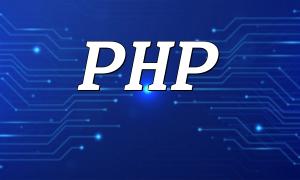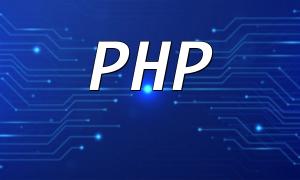Errors are a common issue when writing PHP scripts. PHP defines several common error types:
NOTICE: Non-fatal runtime errors that do not cause script termination.
WARNING: Non-fatal runtime warnings that indicate an issue but allow the script to continue running.
FATAL: Fatal runtime errors that cause script termination.
PARSE: Compilation errors that prevent the script from being parsed.
These error types can be configured via the error_reporting directive in the php.ini file, allowing developers to choose which types of errors should be reported.
PHP provides several functions to handle and log errors, including:
die(): Outputs a message and stops the execution of the current script.
error_log(): Logs error messages to a log file.
error_reporting(): Specifies the types of errors to report.
trigger_error(): Triggers a user-defined error message.
These functions allow developers to customize the error handling mechanism based on project needs.
In PHP, errors usually stop script execution and display an error message. The exception handling mechanism was introduced to prevent this and ensure the application continues running smoothly.
In PHP, developers can use the try...catch statement block to handle exceptions.
try {
// Code block
} catch (Exception $e) {
// Handle exception
}
If an exception is thrown inside the try block, the catch block will execute the exception handling logic.
PHP allows developers to create custom exceptions by extending the Exception class.
// Custom Exception class
class CustomException extends Exception {
public function errorMessage() {
$errorMessage = 'Error Message: ' . $this->getMessage() . ' occurred at line ' . $this->getLine() . ' in file ' . $this->getFile();
return $errorMessage;
}
}
// Throwing the custom exception
throw new CustomException('This is a custom exception');
The code above defines a CustomException class with an errorMessage() method that returns detailed exception information. Developers can throw this exception and handle it in the catch block.
Debugging is the process of identifying and solving problems by analyzing the code. PHP offers a variety of debugging tools that help developers find and fix issues more efficiently.
Xdebug is one of the most popular PHP debugging tools, providing various useful features:
Setting breakpoints and stepping through the code.
Collecting performance and coverage data.
Generating stack traces for better debugging.
To enable Xdebug, follow these steps:
pecl install xdebug
Next, open the php.ini file and add the following line:
zend_extension = "/path/to/xdebug.so"
After configuration, restart the web server and connect a debugger like Eclipse or Netbeans to the server.
Debug Bar is a debugging toolbar for PHP applications that provides detailed information about the application’s execution. Developers can use it to analyze performance and troubleshoot issues in real-time.
PHPStorm, developed by JetBrains, is a powerful integrated development environment (IDE) for PHP. It provides tools for code refactoring, debugging, and analysis. PHPStorm fully integrates with Xdebug and Zend Debugger and can also work with other tools like XHProf, Webgrind, and PHPUnit to streamline the debugging process.
PHP's error handling mechanism and debugging tools provide developers with powerful resources to handle and solve issues more effectively. By leveraging these tools, developers can easily identify and resolve problems in their applications, resulting in better code quality and improved development efficiency.










